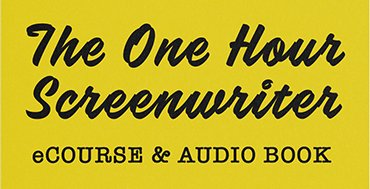#WritingAdviceWednesday – Writing Exercise: Cars and Chairs
Writing Advice Wednesday
I hope you’ve been enjoying Writing Advice Wednesday for the last few months, but I’m trying something different for the rest of the year’s posts. As well as a relevant video essay I’ve found, I’ll be giving you writing exercises to stimulate your imagination.
It’s exercises like this that form part of my One Hour Screenwriter course, which will help you write an entire feature film script in 22 weeks. You can purchase it at the shop here. You can also read testimonies here that show my methods have worked for other people.
This week, you’ll be writing description:
Describe your first vehicle
Sit back and remember your first “solo flight”. The first vehicle under your exclusive control might have been your first car, your first bicycle, your first skateboard or your first boat. It might have been a first trip on public transportation all by
yourself, or it might have been some other means of transportation that enabled you to “fly solo” and travel on your own.
Describe as completely as you can your first means of independent travel. If this journey was in your own personal vehicle, when did you get your first mode of transportation? Who gave it to you? Did you pay for it yourself? What did you do to earn the money? Whether it was your own vehicle or other means of transportation (or public conveyance), what did it look like? What did it feel like?
Where did you first ride, drive or sail? Who or what did you see along the way?
What other sense memories do you have of those first “solo flights”? What about your experiences were particularly memorable? How did it make you feel?
If you can’t remember a first- time experience, describe in detail any other memorable journey, trip or excursion in a vehicle. Where did you travel? How did it make you feel? What made that jaunt unforgettable for you?
Take 10 to 15 minutes to complete this exercise. Do not censor yourself; write what ever comes to mind.
Don’t be worried about being articulate, artistic or interesting. Just write.
Don’t worry about style, tone or form. Just keep writing.
Let your memories flow. Make your descriptions as detailed, vivid and personal as possible. If these memories spark something else write about that as well.
How was your first journey alone similar to and different than writing this new story? Are the feelings similar? How have you changed since that “first solo flight”? How are you the same?
Write as much as you can in the time allowed or keep going until you want to stop.
Next, do the exercise from your character’s perspective. What was your character’s “first solo flight” like? How did it feel? How has your character changed since those early days? How is your character the same?
Did this exercise spark any ideas or insights into your story or character?
Video Essay of the Week
This week’s video essay from Tony Zhou proves the importance of an object – chairs. Just as your first vehicle meant a lot to you in some way, chairs can tell us as much as about a person as their car, or first journey alone somewhere.
Let me know what you think of this week’s writing exercise by emailing me at [email protected]. I’d love to hear from you as we go forward with more of these writing exercises. Next week, we’ll be taking some risks…
Until then, remember- all you need to do is Get Started and Keep Going!
– Laurie



Create a visual map for a character’s emotional journey. Pull stories from character rather from rote story structure beats. Some of the largest international media companies, use this in story and character development.


A clear concise guide for writers and producers to have by their side as they embark on a project. It gives a really vital reminder of what is key for story success.

No comment yet, add your voice below!